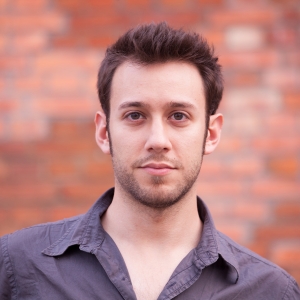- Published on
Q&A with Faruk Ates

My name is Faruk Ates, I am a designer, developer, and entrepreneur. I do product design & development at my own startup called Presentate, an HTML5-based presentation tool. On that product, I do most of the interaction design, visual design, and front end markup and styles.
Hardware
For most of my work, I use a retina Macbook Pro and a Logitech Performance MX. That’s pretty much it. I also do a bunch of paper sketching with sharpies, responsive sketchbooks and UI stencils.
Software
A lot of the familiar tools of most web designers & developers: Photoshop, various browsers and their dev tools, Sublime Text 2 for coding, Evernote… but also some lesser known things, like ImageOptim for compression, Antetype for prototyping, and then utilities like Xscope, ColorSnapper, Github for Mac, Caffeine, Fantastical, Alfred, Dropbox.
Dream setup
Well, if we’re ditching cost-value assessments and go straight to the dream, it would be one of the new Mac Pros, with three displays — one vertically in the middle, and two smaller ones on each side. That way I can put my primary task front and center, whether it involves code or design, and put supportive screens off to the side — two browsers with LiveReload, Photoshop palettes, or social media apps when I’m doing community-related work. Alternatively, a single 4K display. And, of course, an adjustable desk, so that I can switch between sitting and standing with ease. I’ve had one of those at a previous company I worked at, and really appreciated it.
Inspiration
From a lot of things. A big part of it comes from paying very close attention to how each product I interact with works, even the really simple, non-technical ones. A poorly designed door handle stands out to me, for instance, and paying such close attention to the interfaces in your life is highly valuable. Sure, it can be a bit tedious, as you start to appreciate good design and get frustrated with bad design more, but practicing these observations informs you when creating products of any kind.
I also get some inspiration from Sci-Fi books and movies. Good product design aims to speed up workflows, minimize distractions and interruptions to your process, and create an enjoyable, or even delightful experience. My expectations of the future are more of these principles applied to everyday things—some of which we’ve been seeing a lot of, lately, with products like Nest—and sometimes, thinking about how future things may work gives me ideas for what I can do right now.
Lastly, empathizing with users’ needs through doing research and listening closely to them is a big driver as well. You learn a ton from seeing someone use your product, but even just listening attentively to people as they talk about using any product can teach you a great deal about things they like, don’t like, and what kind of (unique or common) needs they have. It’s easy to build a product for yourself to use; it’s much harder to build something for others, and have it be just as great for them.